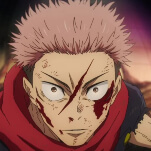Frontline: “The Anthrax Files”

The unprecedented publicity and public outcry over the execution of Troy Davis last month shined a spotlight on an issue that dedicated activists, legal experts, and investigative reporters have been covering for years: the epidemic of wrongful convictions in this country. It’s an issue that Frontline has covered extensively in the past, from the execution of (the almost certainly innocent) Cameron Todd Willingham, to the misuse of forensic science in unexplained child deaths. Now, in a joint investigation with ProPublica and McClatchy Newspapers, they’re taking this work into slightly murkier territory. “The Anthrax Files” casts serious doubts on the FBI’s investigation of the 2001 anthrax attacks that briefly terrorized an already shaken country. Though Bruce Ivins, the man the FBI ultimately pinned for the attacks, was never actually convicted of a crime, he paid the ultimate price: In 2008, under intense pressure from the FBI, he died after swallowing a bottle of Tylenol PM.
The story begins, naturally, in the tense days of September 2001. Just a week after the 9/11 attacks, Grant Leslie, then an intern in Senator Tom Daschle’s congressional office, was dutifully opening the senator's mail, when a fine vapor of white powder escaped from one of the envelopes. After this cursory recap, Frontline plunges right into the ensuing FBI investigation. Oddly, the filmmakers don’t recount the basic stats of the anthrax attacks: five deaths, 17 infections, letters sent to major media outlets. It’s not a critical oversight, but given the long shadow cast by 9/11, a brief refresher might have been useful.
In the wake of the attacks, the Bush administration applied intense, “almost daily” pressure on FBI director Robert Mueller to find the culprit, pressure that sent desperate investigators up a blind alley for several years. The anthrax used in the attacks was traced to the United States Army Medical Research Institute of Infectious Disease (known mercifully as AMRIID), FBI investigators determined that it must have been an inside job. After New York Times columnist Nicholas Kristof ran a series of columns on the subject, suspicion centered on Steven Hatfill, a bio-weapons researcher at the lab. The FBI waged a campaign of intimidation, keeping Hatfill under “bumperlock” surveillance for months on end, and Attorney General John Ashcroft publicly named Hatfill as a person of interest, despite the lack of any physical evidence in the case.
At the cost of $250,000 the FBI drained a pond near Hatfill’s Maryland home, based on the patently ludicrous idea that he was operating from an underwater laboratory. The process of dredging the lake took weeks and turned up a single piece of potential evidence: a plastic box with a hole in it that turned out to be a turtle trap. The bungled FBI investigation is a reminder of how easily the “War on Terror” fuels exactly the kind of government waste that conservatives claim to despise and how the demand for "justice" can have quite the opposite effect. In this case, the filmmakers don't have to do much to make the bureau look foolish.








































